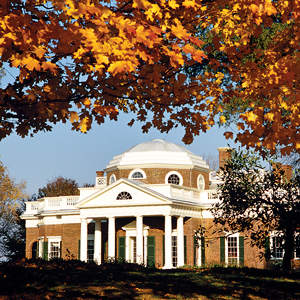In September my husband received the call he had been crossing his fingers for and I’d been dreading: A job in Atlanta was his. Oh goody. Our new life in Virginia was about to be history.
Long-story-short: We ended up staying (and the angels sang), but those few months of living on the precipice of leaving Richmond caffeinated me. Take it from somebody who lived in California forever, Virginia is one of the most exciting states in the country. Locals who have grown up around the historical cornucopia of riches, tend to be all been-there, done-that. But not me. Virginia’s history is brand new in my life – and, for that matter, it’s new to your kids too! First up, the bazillion presidents’ homes seemingly everywhere throughout Virginia.
My 10-year-old boys, teetering on the eye-roll years, have never once begged to “visit some dead guy’s house” – their words, not mine. Actually, I informed them, we had eight dead guys’ houses to visit. (On the QT, there are way more than just eight destinations, but I wasn’t telling them that.)
I put on the I-mean-business face and informed them that the presidents were not to be referred to as “dead guys,” and that in fact, Virginia had delivered the very lions who sunk body and soul into creating our wondrous country.
One boy yawned.
I acquiesced, “We’ll cut our visit to the three biggies.” No reaction, so I weakly added, “We’ll see the dead guys’ swords.”
They grunted in semi-acceptance. My spell was cast.
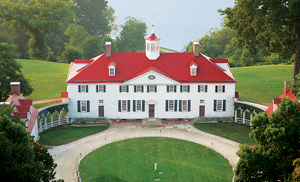
Washington’s Mount Vernon
One fall morning we set the GPS for the most popular historical estate in America – if the one million visitors per year are any indication – Mount Vernon. If you haven’t been since your eighth-grade field trip, the prices aren’t bad: $17 for adults, $8 for those eleven to six, and free for five-and-unders. And all proceeds go to preserving the estate.
The preservationists’ work? Impeccable. If our first first couple were to enter their home today, they would be astounded by the love poured into Mount Vernon’s every nook and cranny. Gaping as I rounded each corner of the mansion, I had to remind myself to shut my mouth so I didn’t look like the wide-eyed newbie that I am.
The mansion’s walls are kept at the precise hue from Martha and George’s day, antique furniture that the couple would surely recognize is throughout, and a backyard view of the Potomac looks just as it did in the eighteenth century.
Walking to the third floor to see the actual bed that cushioned Washington as he died in 1799 brought a lump to my throat – and yes, I teared up when the guide explained that Martha closed their bedroom door forevermore after her husband died.
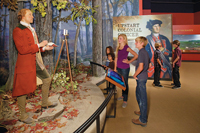 From my boys’ point of view, however: no tissues needed. The mansion was “okay,” (ignore them, it’s awesome) while the Donald W. Reynolds Museum & Education Center – packed with Martha and George’s items – bowled my boys right over.
From my boys’ point of view, however: no tissues needed. The mansion was “okay,” (ignore them, it’s awesome) while the Donald W. Reynolds Museum & Education Center – packed with Martha and George’s items – bowled my boys right over.
The museum is top-notch. You can easily spend four hours exploring this treasure and still not see it all. Hundreds of the couple’s items glitter from display cases including Washington’s famous dentures, Martha’s jewelry, and the family silver. The very weather vane (a dove of peace) that Washington had custom-made after the war is front-and-center. My boys bolted from room to room to drool over the swords, muskets, and Washington’s Revolutionary War items and to watch the engrossing movies about the great man’s life.
Visitors can pay homage at the tomb where Martha, George, and other family members are buried and at the enslaved people’s burial ground. A poignant memorial to slaves (designed and built in 1983 by Howard University architectural students) should not be missed.
Plan a full day to take in the grounds, mansion, and museum. Most importantly, when scheduling your trip, know this: You can save money by visiting on Presidents’ Day – Mount Vernon waives the admission fee that day – but you’ll be hanging out with roughly 12,000 people who got into Mount Vernon for free, so consider yourself warned.
But you’ll practically enjoy a private tour with enthusiastic, knowledgeable guides if you visit any other day in February. Essentially, any time between October and March is quiet (except on that aforementioned day). MountVernon.org.
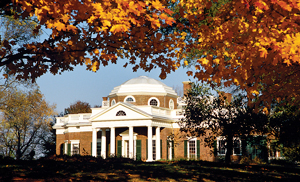
Jefferson’s Monticello
Next up, the home of Thomas Jefferson – the Founding Father who authored our country’s masterpiece, the Declaration of Independence, almost doubled the size of America with the Louisiana Purchase, was our third president (two terms), founded the University of Virginia, and created a marvel of a mansion, Monticello.
My boys, who were just six when I first attempted Monticello, didn’t give a hoot who had written, or built what. Now in their tenth year, I thought a visit might work. I pointedly signed up for the family-friendly tour (only seasonally available) in hopes that it would engage my guys.
An hour’s drive from Richmond, we wisely arrived an hour before our tour, giving us time to eat in the café, watch an engaging movie, and explore the gorgeously-stocked Monticello gift shop.
When our tour time arrived, we hopped on the shuttle – to my bus-starved boys’ utter delight (they’re homeschooled after all) – and rode to Jefferson’s beloved Monticello, Italian for “little mountain.”
From an adult’s point of view, Jefferson’s genius fills every room with skylights, a unique calendar that you have to see to believe, pocket doors, and his bed that he had built into a wall that faced two rooms at once. He also built an uber-tight staircase because one of the most progressive thinkers of his time thought stairs a waste of space.
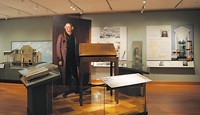 I was touched that our family-friendly guide, Clearly a retired history teacher, shushed the adults and got down on one knee in every room and pointed out all that might interest a child. He let the kids draw straws explaining that, in Jefferson’s day, the child who picked Jefferson’s shortest straw read a particular book last, but got to keep the book. He even read a letter from a granddaughter to Jefferson.
I was touched that our family-friendly guide, Clearly a retired history teacher, shushed the adults and got down on one knee in every room and pointed out all that might interest a child. He let the kids draw straws explaining that, in Jefferson’s day, the child who picked Jefferson’s shortest straw read a particular book last, but got to keep the book. He even read a letter from a granddaughter to Jefferson.
My boys loved interacting at stations with objects from Jefferson’s era, which they later called, “the best part of visiting Monticello.” (What do they know? They’re ten.) Yesteryear toys, like a wooden cup-and-ball catcher and writing instruments like a quill pen dipped into ink, thrilled them.
The slave’s quarters also fascinated my boys, while Jefferson’s tomb, the family cemetery, and the gardens and grounds captivated me. To really see Monticello in its entirety the foundation provides a bevy of customized tours including After Hours, Behind the Scenes, Slavery at Monticello, Garden and Grounds, and wine tours.
Price-wise, tickets run $25 and $18 depending on the season, while kids six to eleven are always $8. Free passes are not available on Presidents’ Day. Like Mount Vernon, Monticello is privately run so admission fees go to to preserving this treasure. Monticello.org.
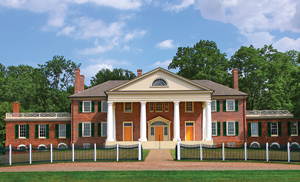
Madison’s Montpelier
The third famous presidential mansion belonged to the fourth President of the United States, James Madison – the man hailed as the Father of the Constitution and the Architect of the Bill of Rights. Madison, educated at what is now Princeton, spoke seven languages and was extremely good friends with Thomas Jefferson. Yet for all Madison’s work to shape our country, he is probably best known today for his celebrity wife.
Widowed Dolley Payne Todd married Madison in 1794 and became known for her avant-garde fashions, warm hospitality, and weekly soirées. When Jefferson and Madison became the third and fourth presidents respectively, Dolley acted as first lady for the widowed Jefferson when he was in office and as the official first lady when Madison became president.
But it was in 1814 when the British pillaged DC and torched the Executive Mansion that Dolley left her mark on history. As the British approached, Dolley grabbed important government papers and instructed her servants to pull down the enormous portrait of George Washington. When she saw that they couldn’t pull the frame off the wall, she ordered the men to break the frame and pull the portrait down. Go Dolley! The portrait hangs today in the Smithsonian’s National Portrait Gallery. (A copy is in the White House.)
Dolley and James’ private estate, Montpelier, is located in Orange County about an hour’s drive from Richmond.
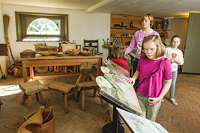 The land and estate, originally purchased by Madison’s father, went through many transformations through the centuries. In Dolley and James’ day, several rooms and wings were added, and in 1901 the du Pont family, upon buying Montpelier, enlarged the mansion du Pont-style. Finally in 2003, the home was bequeathed to the National Trust, and began to be expertly remodeled (with professional advice from Colonial Williamsburg) back to the state Dolley and James would recognize.
The land and estate, originally purchased by Madison’s father, went through many transformations through the centuries. In Dolley and James’ day, several rooms and wings were added, and in 1901 the du Pont family, upon buying Montpelier, enlarged the mansion du Pont-style. Finally in 2003, the home was bequeathed to the National Trust, and began to be expertly remodeled (with professional advice from Colonial Williamsburg) back to the state Dolley and James would recognize.
A fascinating guide worked hard to make the 45-minute tour Interesting for the kids. Perhaps the most exciting room was the old library upstairs where Madison read 400 books before writing the Constitution.
Unlike Mount Vernon and Monticello, you won’t find enormous crowds at Montpelier, meaning you’ll have more time to ask questions galore, get a great look at the fascinating du Pont exhibit, and watch the archaeologists dig (Monday through Friday). You can also visit Dolley and James’ tomb, the enslaved people’s cemetery, and the small train depot the du Ponts added. You’ll find a quick movie and a great gift shop too.
Montpelier is closed on Mondays (except holidays) and open the rest of the week. Ticket are $18 for adults, $7 for children 6 to 14 and, and again, all proceeds go to preserving the estate. A special Presidents’ Day price is not available, but an entire carload can visit Montpelier for just $10 in September for Montpelier’s super Constitution Day celebration. Montpelier.org.
Virginia is for History Lovers
Growing up in California, my friends and I thought history was something to be memorized for tests and promptly forgotten. East Coast friends perplexed us when they would rattle off dates, battles, and info on the Founding Fathers with nary a quiz in sight. Today I finally get it: Virginians know their history because you live in the heart of where it all began. Pass this list of the eight presidents’ homes onto your kids and galvanize your family to visit as many as your schedule allows. Their teachers will thank you.
George Washington: (first president) Mount Vernon, Alexandria (adult home); Ferry Farm, Fredericksburg (boyhood home), Pope’s Creek Plantation, Westmoreland County (birthplace).
Thomas Jefferson: (third president). Monticello, Charlottesville (adult home); Poplar Forest, near Lynchburg (retreat), Tuckahoe, River Road, Henrico (boyhood home; grounds tours daily, home tour by appointment only).
James Madison: (fourth president) Montpelier, near Orange (adult home), the James Madison Museum, Orange; The Octagon House, Washington, DC (presidential home after Executive Mansion burned).
James Monroe: (fifth president) Ash Lawn-Highland, Charlottesville (adult home); James Monroe Museum and Library, Fredericksburg; Hollywood Cemetery, Richmond (interment).
William Henry Harrison: (ninth president) Berkeley Plantation, Charles City County (adult home).
John Tyler: (tenth president) Sherwood Forest Plantation, Charles City County (adult home); Hollywood Cemetery, Richmond (interment).
Zachary Taylor: (twelfth president). Born in Orange County and moved to Kentucky as a child.
Woodrow Wilson: (twenty-eighth president) The President Woodrow Wilson House, Washington, DC (adult home); Woodrow Wilson Presidential Library and Museum, Staunton; Rapidan Camp, Shenandoah National Park (retreat).
Visiting Mount Vernon and Need a Kid-friendly Stay?
It’s an easy fifteen-minute drive to Mount Vernon, and the red carpet is rolled out for families at the Kimpton’s Hotel Monaco. Just say “Kimpton kids” when you make your reservation and your kids will receive a backpack of toys at check-in and cookies and milk on the first night. Also, mention goldfish and a bowl of the little swimmers (the real thing!) Will be in your room when you arrive. Most importantly to a kid? A forty-foot indoor pool that shows dive-in movies on the weekend. For parents, the guest room décor is full-on jewel box. Plus, the Monaco pours complimentary wine every evening in the lobby – with a fabulous coffee station in the morning.
For free fun in Alexandria, hop on the King Street Trolley that runs every fifteen minutes. Must-sees include Whistle Stop Hobbies (for great toys) and the Apothecary Museum. History lovers and young Harry Potter fans especially will love exploring the treasures of this historic establishment, where Martha Washington herself sent for medicinal needs.
Keep your camera handy for the family photo op with the Monaco’s too-funny animal print bathrobes. The kids will also love the daily kids’ hour at four where they’ll find snacks and games like Trivial Pursuit and a Wii (from which it took two of us to pry my boys). Animal lovers will be thrilled to hear that all Kimpton hotels are staffed by animal lovers, too. Dogs, cats, even parrots – are welcome at the Monaco in Alexandria and one evening a week is devoted to doggie yappy hour. There’s no extra animal fee of any kind.
Mount Vernon photos courtesy of Mount Vernon Ladies’ Association. Monticello photos: Thomas Jefferson Foundation and Ed Owen Courtesy of Virginia Tourism Corporation. Montpelier photos: Ken Rowe and Kenneth M. Wyner, courtesy of The Montpelier Foundation.


